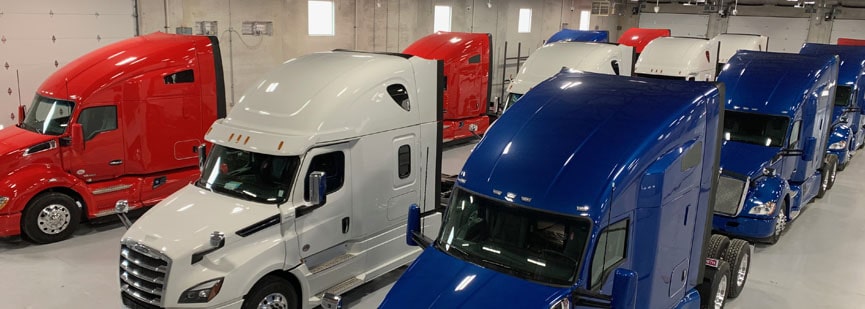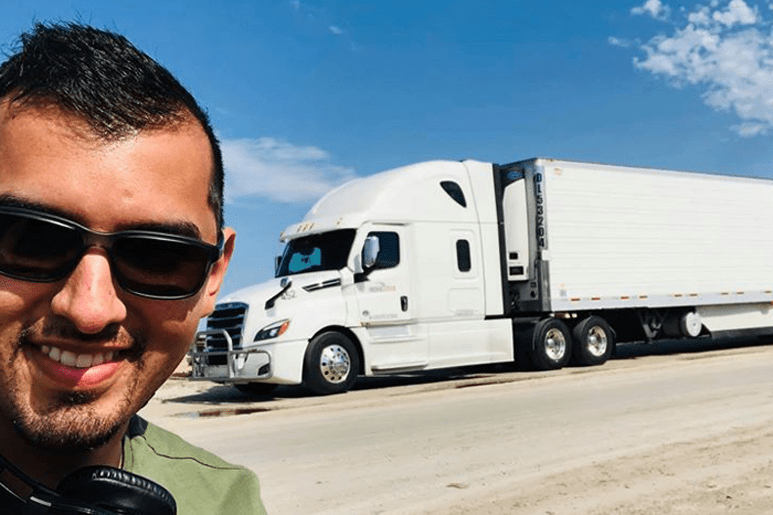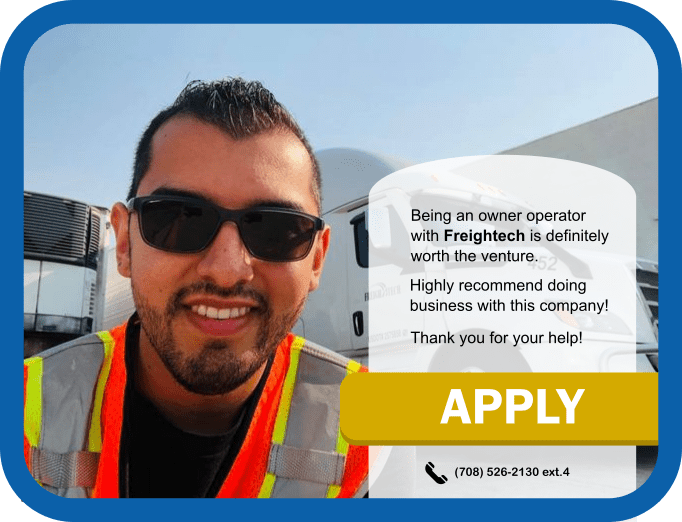Last update: 20 Aug 2021
Trucking has become a lucrative business with an upward trend for the past decade, and we see more and more people opting for a career in the trucking industry. How many times have you passed down the interstate and noticed at least a few truck drivers maneuvering those massive vehicles almost as light as a feather? You think to yourself, boy do these guys make money, right? All they got to do is drive.
While that may be somewhat true, the thing about truck drivers is they deal with a lot alongside the driving and they don’t all fall under the same category.
We distinguish between company truck drivers and owner-operators. In case you are interested in testing the waters as a truck driver yourself, but you are keener on being your own boss-type of thing, or you are already a truck driver waiting to start an independent career, becoming an owner-operator is what you should aim for.
Table of Contents
- What is an Owner Operator?
- Earnings and expenses for Owner Operators.
- Personal health and maximizing profits.
- How to become an owner operator?
- Conclusion.
What Is an Owner-Operator?

To get the feel of what an owner-operator is, first we need to look at what being a company driver really means. So, a company driver is a trucking company employee that drives a company truck. Company drivers are either paid by the hour or by the mile.
An owner-operator, however, is the freelancer of modern age. Owner-operators are independent contractors. To be more specific, they are self-employed truck drivers carrying goods for the clients of the company they joined ventures with. An owner-operator can have several regular clients, i.e. companies they collaborate with. We at Freightech successfully collaborate with owner operators for years. Feel free to check open positions for owner-operators in our company.
It’s very common for owner-operators to lease their trucks and equipment to shipping companies without doing the actual driving. In case an owner-operator has multiple drivers working for them, they’re known as being a freight agent.
Earnings and Expenses
If you decide to go full independent, you can expect to have higher rates per mile than company drivers, but also more expenditures.
Owner-operators make about 80% of the load.
So if a load is $2.50, you should expect to make $2 out of it, while company drivers get paid between 0.4 and 0.7 cents per mile.

Company drivers make around 80,000 or more in annual salary, while owner-operators make annual gross revenue between $100–$150k. That’s without the expenses, of course.
Annually, owner-operators should expect to spend money on fuel as the biggest expenditure, truck maintenance, tires, insurance, general administrative fees like the ones for accounting, and paying legal and business consultants, and food and beverage which is not to be overlooked because you can’t skip a day or two, right? Food and beverage expenses are also known as per diem expenses.
So we conclude that the owner operator’s payment primarily depends on the driver, and the company he works for.
But we can say how much our owner operators make after expenses, which is over $4000 / $5000 per week.
Personal Health and Maximizing Profits
When deciding to work as an owner-operator truck driver, you need to have several questions in mind:
- Can my health allow me to be on the road for longer periods of time?
- Is my body okay with sitting for long periods of time?
- How does my family feel about this?
- In case of having to be on the road for too long, will my partner be willing to join me?
The trucking business is a commitment and especially a financial one, so you need to be willing to put the time, sweat, and effort, and being away from home. To really make all that hard work worthwhile, what you need to do is stick to the ultimate golden truck ratio below:
Revenue per mile—Cost per mile = Gross revenue—Taxes = Net profit
To acquire a viable net profit, one that is going to make a difference in your life, you will need to lower your variable costs first by reducing your fuel necessities. You can do this by always going through the shortest route and minimizing your vehicle being turned on but idling because it slurps like a gallon of fuel. You should also conduct frequent vehicle check-ups to avoid bigger repairs that usually cost a fortune.
Pro Tip: Dash Camera. Install one to avoid paying for potential road accidents in which you had absolutely no fault. Your dash cam is your proof and your safety net for such occasions. A dash cam will cost you around $60, but it’s a long-term investment.
How to Become an Owner-Operator?
1. Assess your assets.
Is your truck up and running? Is it ready to be leased right out the gate? When you start working, you want to make sure your equipment is up to par and functional because beginnings are when you make first impressions and build trust, so you want to offer good services but also functional equipment to be able to obtain clients that will want to work with you long term.

What else you should do is evaluate your finances because, in case of things going south and unexpected damages, you want to be able to repair your equipment and get back on the road as soon as possible. A spreadsheet is often helpful for this. Your spreadsheet should encompass two columns: your balance sheet and your profit-and-loss predictions for up to a year.
If you don’t have that hard, solid cash, then you need to make sure you are liable for a bank loan. Apart from investing in equipment, there are so many other expenditures, both planned and unplanned, so you will need to have funds. Big time.
2. Come up with a business plan
Every business should incorporate an executive summary, business description and structure, market analysis and marketing strategies, employees and management as well as a financial plan – you need to calculate the amount of money you need to cover your expenses, the money you need to start your business venture, and the money you will need over the course of the next 3 or ideally, 5 years. Your business plan is the frame, the projection toward the future, and it should be well-thought-out.
3. File for a CDL
To start operating as an owner-operator, the first thing you should do, the first concrete step would be getting a commercial driver’s license (CDL). To obtain the license, here’s a to-do list we prepared for you to follow:
- Meet the age requirement, which is 21 years of age or above
- Submit your state’s CDL application (fee included)
- Provide identity and social security number verification as well as proof of state and US residency
- Submit a completed medical examination report (including a drug test) form alongside the medical examiner’s certificate form
- Pass a vision test
- Pass a knowledge exam (afterward, you are issued a commercial learner’s permit (CLP)
- Schedule your CDL road skills examination (after waiting a minimum of 14 days)
- Pass a pre-trip inspection
- Pass the road skills and driving examination
- After passing, pay the necessary fees for your new CDL.
4. Register your business.
To have a legitimate business, you first need to decide upon a legal structure. This is important because the legal structure determines the height of your taxes, the paperwork that comes along, the personal liability you have, how big of a loan you can take. Most likely, it will be that of a sole proprietor (business with no employees, which tackles your personal assets in case of debt) or limited liability company (LLC) which means your personal assets are protected.
Once you’ve chosen a name for your business and a legal structure, go to the Secretary of State’s online page, create an account, choose the legal form, fill in the application, submit it, and pay the fee. This is all easier said than done, but you can always call your state’s Secretary of State and get all the information you need.
5. Obtain a USDOT and MC number
You can obtain your U.S. Department of Transportation number by applying for it through the Federal Motor Carrier Safety Administration website. FMCSA issues the number, which in turn, makes you an official carrier operating in interstate commerce.
Your motor carrier number makes you a for-hire carrier. The MC number is also issued by the FMCSA and obtained through their website.
6. Get your truck insurance.
Your commercial truck insurance covers liability; it pays for damages that you cause to other people and their property incorporating physical injury and property damage. Truck insurance will vary from $8,000 a year to $12,500 a year.
Insurance brokers representing an insurance company can help you in determining which insurance to choose or which one will work best for your unique situation, however, a major rule of thumb would be to opt for the one that provides you with the biggest coverage.
7. Find clients
Your starting point here would be to make use of list boards. Browse through list boards like Truckstop.com to find clients and routes, negotiate prices, understand the paperwork, even find brokers and the insurance you need. You can also integrate the tools list boards like Truckstop offer to make your workflow a lot easier and more efficient, get paid through their platform by simply submitting your invoice to Truckstop after hauling a load, and have it all – under one roof.
8. Get your electronic logging device.
To be compliant with FMCSA, you will need to buy an ELD to track your hours of duty and record your work status.
ELD devices can cost as high as $900, but an average ELD will cost you around $500. Your ELD can mark on duty,off duty, or not driving based on the truck’s movement.
An ELD must provide the recorded data through USB, Bluetooth 2.0, and the web.
Conclusion
Out of a zillion company truck drivers, stats say that every one in nine is an owner-operator because it’s always easier to work for someone else instead of worry about fees, taxes, and expenses. Being an owner-operator means you will have to pay up to $24,000 for fuel annually, around $15,000 for truck maintenance, or $5,000 for tires, but there is no denying that both career options are profitable even though they face major differences. It’s all a matter of personal preference and a choice in lifestyle.
In case you want to work independently because you want to dictate your own terms and conditions or else, you absolutely can – all it takes is making that first step. And if you happen to have the experience as a company driver, guess what? Half of your job is done already.




